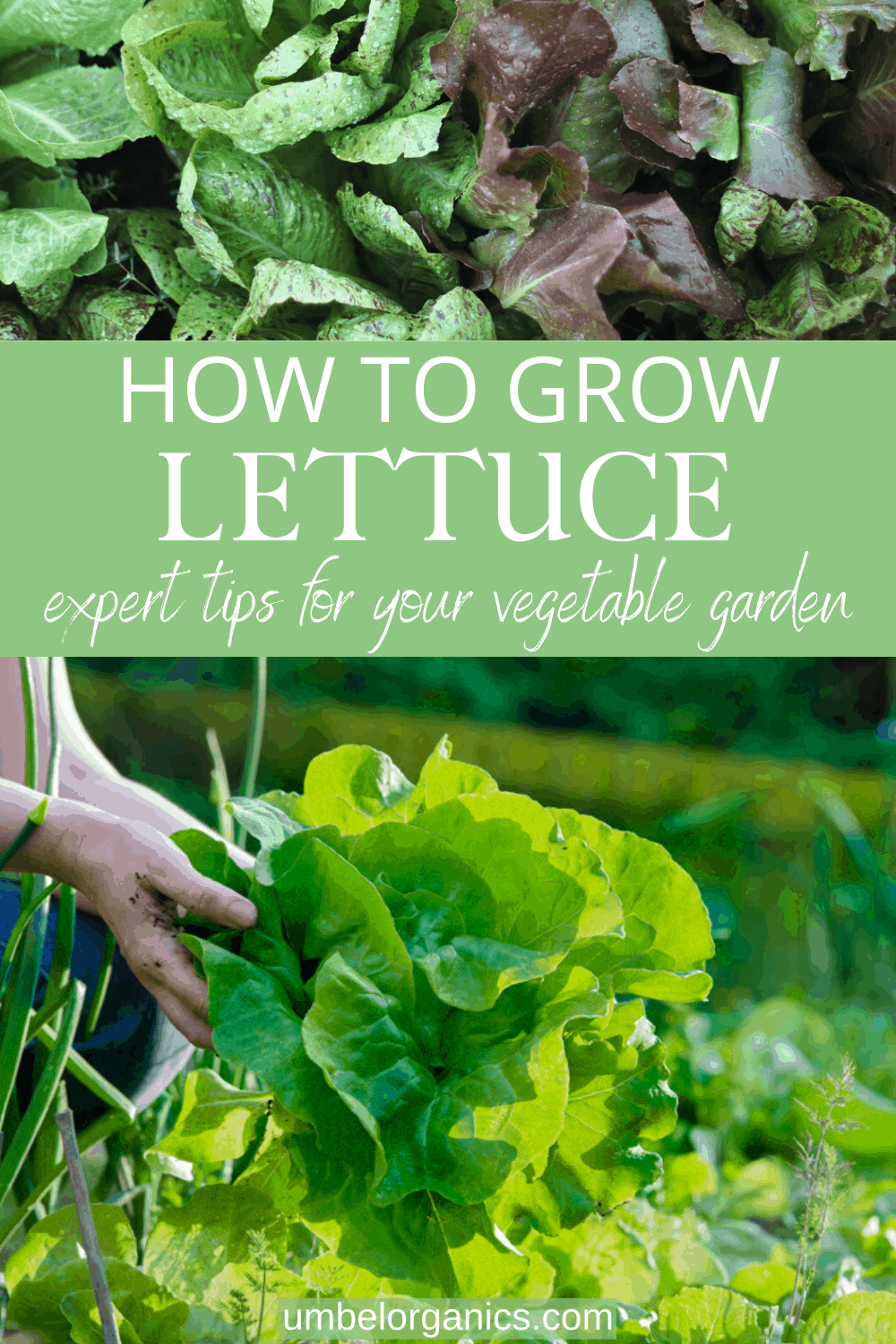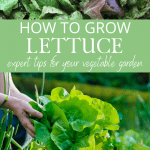How To Plant, Care For & Harvest Lettuce In Your Vegetable Garden
From starting lettuce seeds to harvesting lettuce, we share the best tips for growing your own lettuce. Whether you have raised garden beds or containers, growing lettuce is easy and you can enjoy a successful lettuce harvest with these expert tips.

Disclosure: This post contains affiliate links, which means if you make a purchase through these links, we may receive a small commission at no extra cost to you.
When the lettuce in our garden grows big enough to harvest, we celebrate. All summer long we don’t need to buy those big plastic clamshells of bland, tasteless lettuce from the grocery store. There’s nothing like enjoying a fresh green salad with organic lettuce from our garden.
Lettuce is easy to grow and yields are high, so we definitely recommend giving it a try in your garden. If you follow our methods, you can eat fresh salads over much of the growing season.
Planting Lettuce
Lettuce is a cool weather crop that can tolerate some frost, but is not very tolerant of hot and dry conditions.
We prepare the soil by adding compost and organic fertilizer. Since you want to encourage leafy growth we recommend a fertilizer high in nitrogen (e.g. blood meal).
You can direct seed lettuce in your garden about 4 weeks before your average last frost. You can also start plants indoors, but lettuce grows rapidly in the garden so we don’t bother to start them inside.
To maximize yields, we don’t plant our lettuce seeds in rows. Instead we broadcast seeds very densely over a designated section of our raised beds. You’ll see why in the harvest section below.
Caring For Lettuce
- Soil: Lettuce does best with consistently moist soil so it does not become bitter.
- Sun: Lettuce does well in full sun but can also tolerate some shade. Our dense planting method means that the plants form a living mulch that keeps the soil cool and moist. As we thin out plants we put down straw mulch to conserve moisture and keep soil temperature down.
- Supplement: Lettuce needs nitrogen to support leafy growth, so we water with a liquid organic fertilizer every 2-3 weeks during the season.
- Heat: When the weather gets hot, you will see lettuce start to grow more vertically and eventually it will produce a flowering stalk (this is called bolting). Unfortunately, at this point the leaves become tough and bitter so it is best to pull the plants.
Harvesting Lettuce
Over a period of several weeks we thin out our lettuce crop by pulling out whole plants and using them as baby greens for salads. You can do this several times before you get to a final spacing of around 6 inches between plants, which will allow the remaining plants to grow to maximum size.
With this method, we use very little space in the garden to give us a constant supply of lettuce. Once you have full sized plants there are several options for harvesting:
- You can harvest a few outer leaves at a time from different plants. With this method you can keep coming back over time and harvesting a few leaves per plant.
- You can cut the entire plant about 2-3 inches above the base. If it is still relatively early in the season, the plant will regrow and you can do the same thing again.
- You can pull whole plants. We only do this when it is clear that the plant is going to bolt soon.
Garden Lettuce Tips
If you want to extend your lettuce harvest over a longer period of time, we have several tips.
- We start our first seeds about 6 weeks before last frosts under the protection of hoop tunnels. The added warmth early in the season leads to rapid growth and an early harvest.
- We then stagger sowings about 3 weeks apart through early summer. Lettuce seed germinates poorly in the heat of the summer, but if you start sowing again when the weather cools off, you can squeeze in a fall crop. If you know your crop will be maturing in hotter months, sow seeds in a bed that will be partially shaded in the afternoon, or use a shade cloth to provide some relief from the heat.
Lettuce Varieties We Recommend


